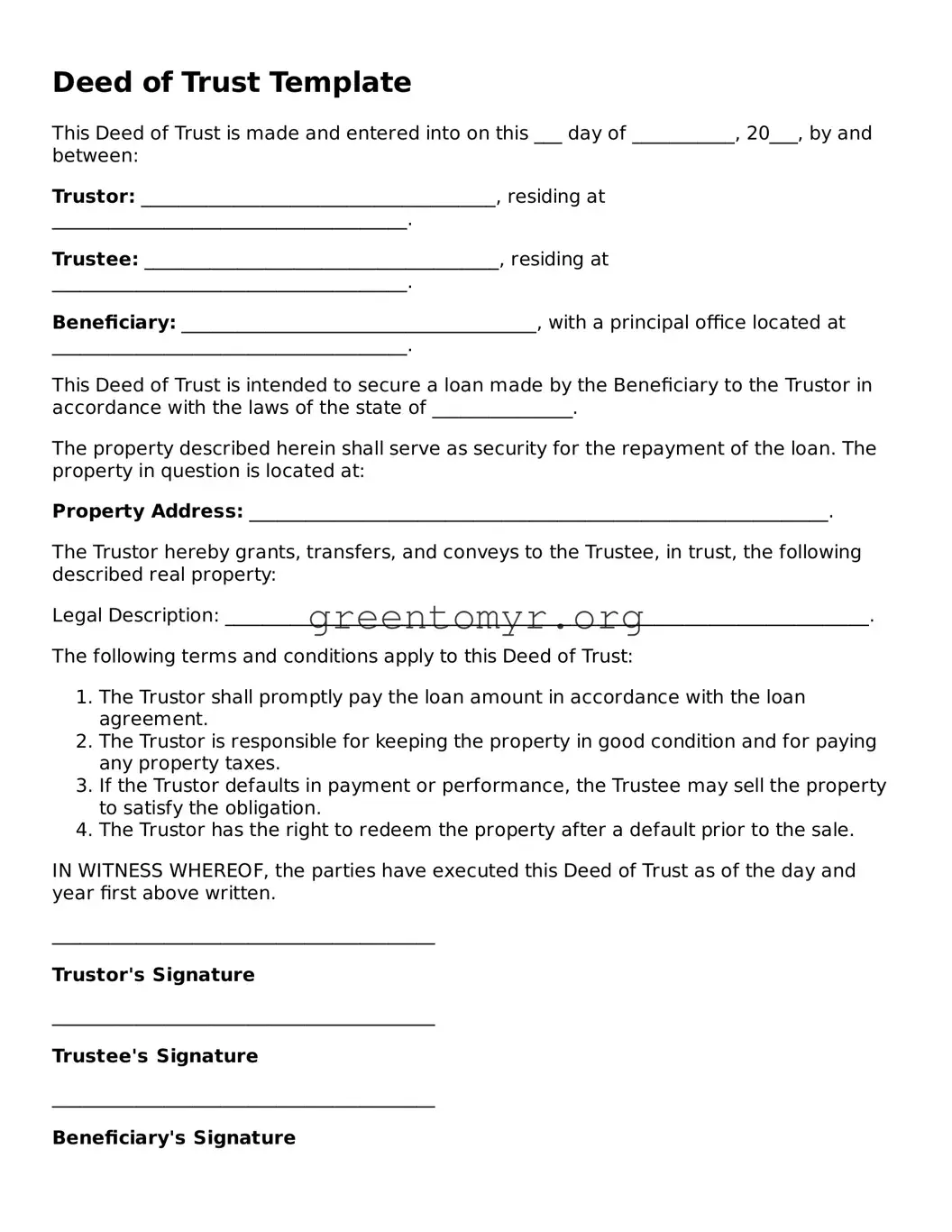Deed of Trust Template
This Deed of Trust is made and entered into on this ___ day of ___________, 20___, by and between:
Trustor: ______________________________________, residing at ______________________________________.
Trustee: ______________________________________, residing at ______________________________________.
Beneficiary: ______________________________________, with a principal office located at ______________________________________.
This Deed of Trust is intended to secure a loan made by the Beneficiary to the Trustor in accordance with the laws of the state of _______________.
The property described herein shall serve as security for the repayment of the loan. The property in question is located at:
Property Address: ______________________________________________________________.
The Trustor hereby grants, transfers, and conveys to the Trustee, in trust, the following described real property:
Legal Description: _____________________________________________________________________.
The following terms and conditions apply to this Deed of Trust:
- The Trustor shall promptly pay the loan amount in accordance with the loan agreement.
- The Trustor is responsible for keeping the property in good condition and for paying any property taxes.
- If the Trustor defaults in payment or performance, the Trustee may sell the property to satisfy the obligation.
- The Trustor has the right to redeem the property after a default prior to the sale.
IN WITNESS WHEREOF, the parties have executed this Deed of Trust as of the day and year first above written.
_________________________________________
Trustor's Signature
_________________________________________
Trustee's Signature
_________________________________________
Beneficiary's Signature
